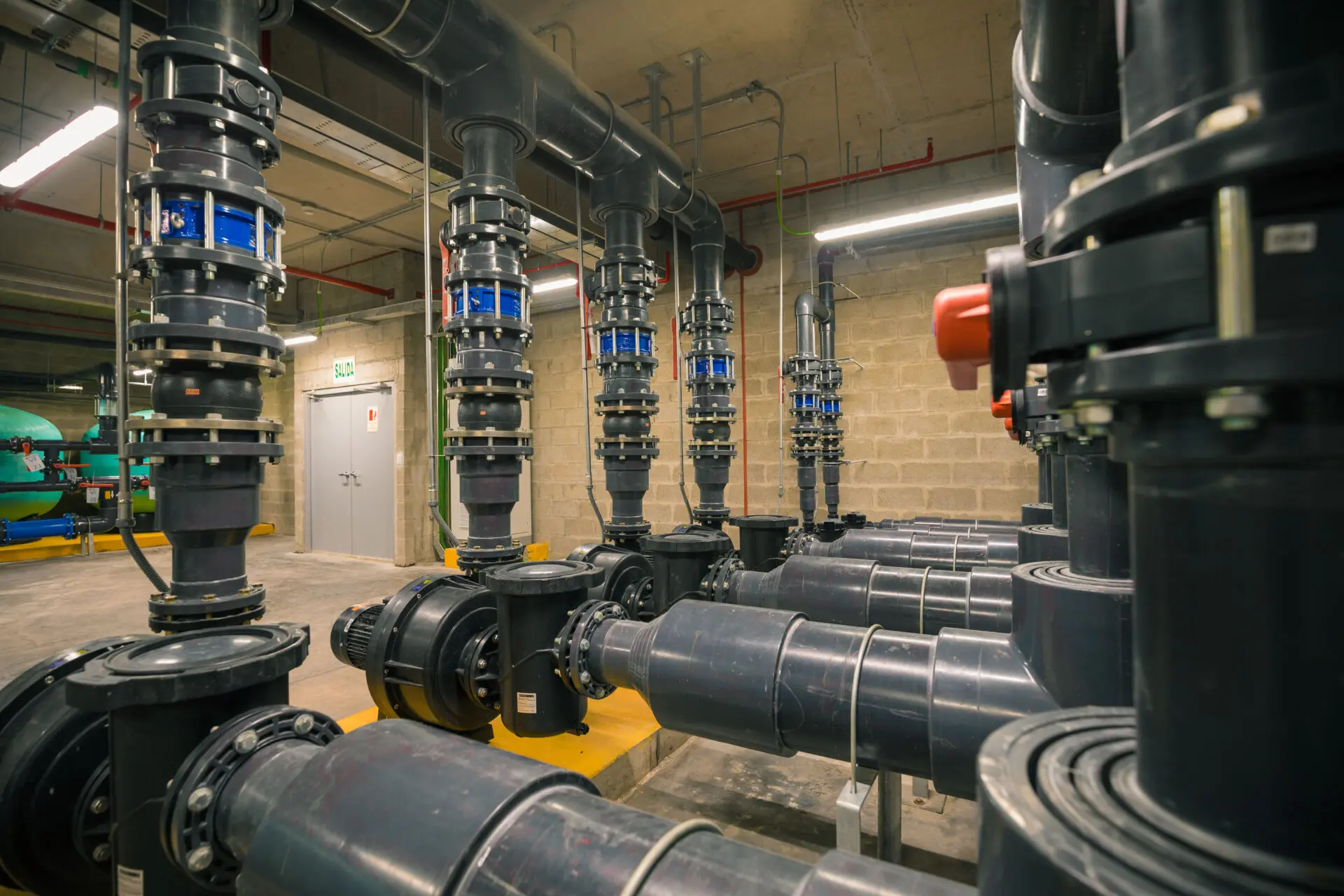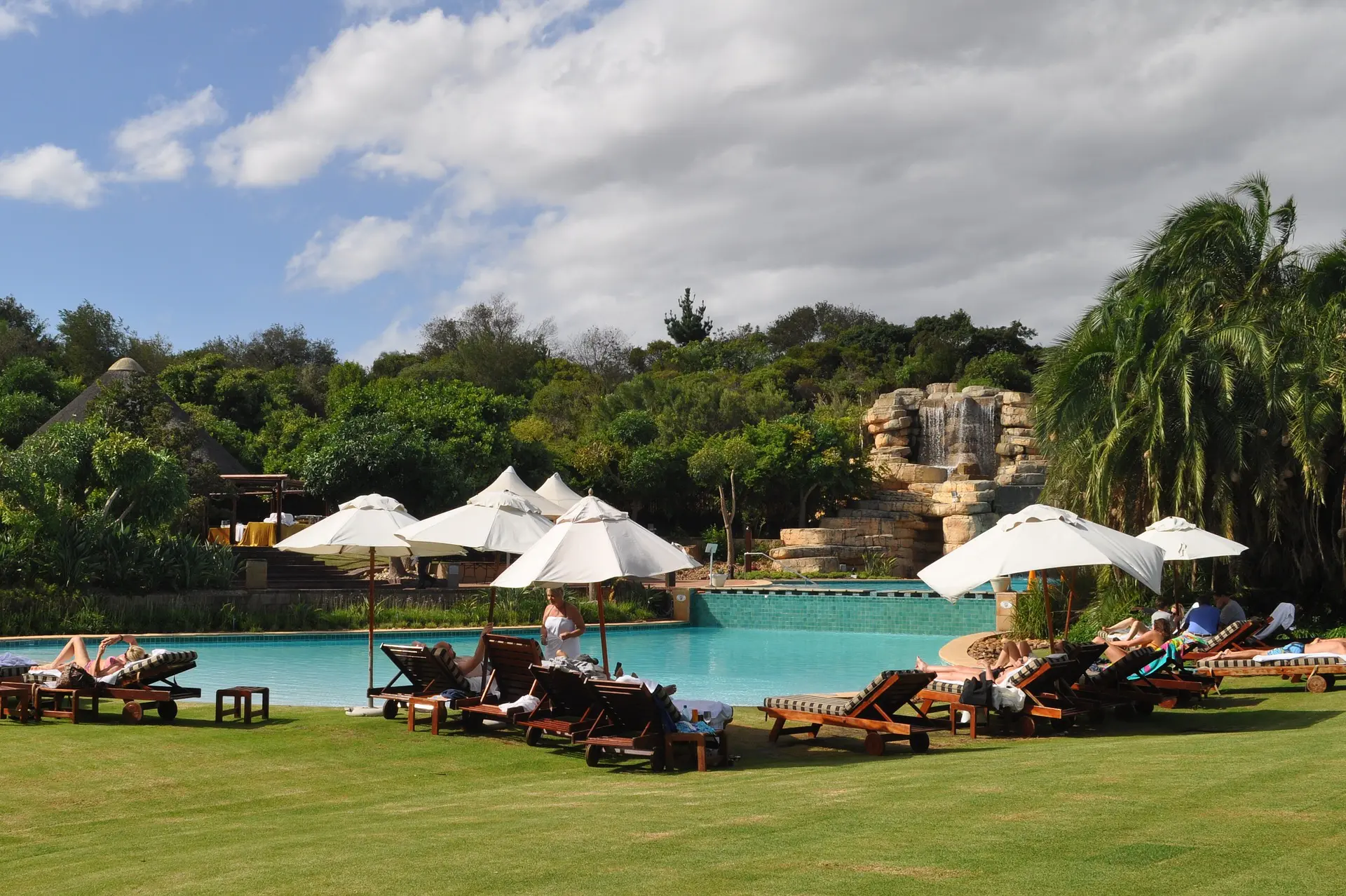If you operate a commercial swimming pool, ensuring your customers’ health and safety is of the utmost importance. One key factor in maintaining a safe and enjoyable swimming experience is turnover rate – the amount of time it takes for the entire volume of pool water to circulate through the filtration system.
In this article, we will explore the rules and regulations regarding turnover rate in commercial swimming pools in key markets in Europe and the USA, and discuss how to calculate and maintain an appropriate turnover rate for your pool.
Dive deeper with the eBook
Why turnover rate is important
Understanding the water turnover rate is essential to ensure that public pools are safe and clean for users. Water turnover rate refers to the time it takes for all the water in a pool to be filtered and circulated through the filtration system, which is critical in maintaining water quality.
Establishing an appropriate turnover rate requires monitoring the necessary flow rate and turnover time. This can be done by ensuring the pool’s filtration system is properly sized and regularly cleaned, and by adjusting the flow rate as needed to ensure the correct turnover rate is achieved.
It is also important to regularly test and adjust the pool’s chemical levels to ensure proper sanitation and clarity. Additionally, the pool pump should run for an appropriate amount of time each day to achieve the necessary turnover rate. Note that running the pool pump 24 hours a day may not be necessary and could lead to unnecessary energy consumption and wear and tear on equipment.
Ensuring that public pools maintain an appropriate turnover rate provides a multitude of benefits. The primary advantage is that it helps to guarantee that the pool’s water is safe, clear, and suitable for use. Regular filtering and circulation of the water can decrease the risk of waterborne diseases and other health hazards, leading to a safer and more enjoyable swimming experience.
Also, it must be taken into account that turnover rate is not the only factor that contributes to water quality. Other factors such as the level of chlorine and other disinfectants in the water, pH level of water, and presence of contaminants such as bacteria and algae also affect water quality. Thus, regular water testing and treatment, along with the maintenance and cleaning of the filtration system, is crucial in ensuring the safety and cleanliness of public pools.

Not only an advantage, but an obligation
In a public pool, the turnover rate is regulated by government agencies. This is the case in Spain, France, the UK, and the US.
In Spain, the Ministry of Health sets quality parameters for public pool water, which includes pH, temperature, bottom drain visibility, redox potential, turbidity, free chlorine residual, residual combined chlorine, total bromine, and Legionella spp. The turnover rate does not have a specific value, but it must be adequate to meet these parameters:
- PH between 7,2 – 8,0
- Temperature between 24 – 30 ºC (>36 ºC in hydromassage pools)
- The bottom drain must be clearly visible
- REDOX potential between 250 and 900 mV
- Turbidity of ≤ 5 UNF
- Free chlorine residual 0,5 – 2,0 Cl2 mg/L
- Residual combined chlorine ≤ 0,6 Cl2 mg/L
- Total bromine 2 – 5 mg/L Br2 mg/L
- Legionella spp <100 UFC / L
You can find more information via the BOE.
In France, the turnover rate and other water parameters are regulated by the Ministère des Solidarités et de la Santé. The water treatment must provide a turnover rate less than or equal to:
For pools initially opened before January 1, 2022:
- 8 hours for diving pools and underwater diving pits;
- 30 minutes for a wading pool;
- 1,5 hours for other pools or portions of pools less than or equal to 1.50 metres in depth
- 4 hours for other pools or portions of pools greater than 1.50 metres in depth.
- 30 minutes for whirlpools with a volume greater than or equal to 10 m3 and fifteen minutes for those with a volume less than 1 m3.
For all pools initially opened after January 1, 2022, or for pools initially opened prior to January 1, 2022, and undergoing renovation of water supply or discharge devices on or after that date:
- 8 hours for diving pools and underwater diving pits;
- 30 minutes for individual non-whirlpool pools and whirlpools with a volume of 10 m3 or more;
- 15 minutes for wading pools and whirlpools with a volume of less than 10 m3;
- 1 hour for slide pools and slide arrival areas;
- 1,5 hours for other pools or portions of pools with a depth of less than or equal to 1.50 metres;
- 4 hours for other pools or portions of pools with a depth of greater than 1.50 metres.
The UK’s Health and Safety Executive (HSE) and the Pool Water Treatment Advisory Group (PWTAG) guidelines set the turnover rate for public pools in the United Kingdom. The turnover rate for different types of pool varies, depending on the maximum bathing load allowed at one time. This bathing load considers factors such as the surface area of water in the pool, water depth, type of users, and the pool’s intended activity. The circulation rate must also be determined, and is calculated using a formula (Circulation rate (m3/h) = bathing load x 1.7 (bathers/m2) that takes the maximum bathing load into account. Finally, the turnover period is calculated from the formula (turnover period (h) = Water volume (m3) / Circulation rate (m3/h) using the water volume and circulation rate.
Turnover periods will vary from pool to pool, but should fall into the ranges shown below.
- Competition pools 50m long: 3 – 4 hours
- Diving pools: 4 – 8 hours
- Domestic pools: 4 – 8 hours
- Hydrotherapy pools: 30 – 90 minutes
- Interactive water features: 20 minutes
- Leisure water bubble pools: 5 – 20 minutes
- Leisure waters up to 0.5 metres deep: 10 – 45 minutes
- Leisure waters 0.5 – 1 m deep: 30 – 75 minutes
- Leisure waters 1 – 1.5 m deep: 1 – 2 hours
- Leisure waters over 1.5 m deep: 2 – 2.5 hours
- Public pools ap to 25m long, 1m shallow end: 2.5 – 3 hours
- Spas – commercial: 6 minutes
- Spas – residential: 15 minutes
- Teacher, learning and training pools: 30 – 90 minutes
- Waterside splash pools: 30 – 60 minutes
The turnover period indicated there for a particular pool may be shorter than that calculated from the previous formula. If so, the table should be followed, and a revised circulation rate worked out from this formula: Circulation rate (m3/h) = water volume (m3) / turnover period (h).
The American National Standards Institute (ANSI) and the Association of Pool & Spa Professionals (APSP) set standards in the United States. The filtration system’s size must have the capacity to turnover all the water in the facility, with the turnover rate varying depending on the pool’s usage:
- * Class A, B and C pools: hours equal to 1 ½ times the average pool depth in feet, without exceeding 6 hours.
- Wading pools: 1 hour
* Class A (competition pools), Class B (any pool intended for public recreational use not otherwise classified) and Class C (hotels, motels and condominiums).
Depending on the type of recreational water facilities, recirculation systems and equipment, including chemical control equipment, UV disinfection systems, filters, and pumps, must be designed to maintain adequate water chemistry control while operating at the following turnover rates:
- Swimming pool (2005 Construction Guidelines or earlier): 6 hours
- Swimming pool (2011 Construction Guidelines or later): 4 hours
- Children pool: 0.5 hours
- Wading pool:1 hour
- Whirlpool spa: 0.5 hours
- Spa pool: 2 hours
- Interactive RWF or Activity pool (<610 mm deep): 1 hour
- Interactive RWF or Activity pool (>610 mm deep): 2 hours
- Baby-only water facility: 0.5 hours

Geographical location isn’t the only determining factor
When it comes to swimming pools that are intended to host official international championships, these must adhere to the World Aquatics (formerly FINA) Facilities Rules. These rules ensure that the water level is maintained, water transparency is preserved, and health regulations are taken into consideration in most countries.
To achieve this, inflow and outflow rates must be regulated as follows, depending on the size of the pool:
- For 50 m pools: 220 to 250 m3/h
- For 33.33 m pools: 150 to 180 m3/h
- For 25 m pools: 120 to 150 m3/h
It’s important to note that at these turnover rates, the water distribution must be carefully controlled to prevent the creation of any appreciable currents or turbulence.
In daily use, inflow and outflow rates must comply with the health regulations of each individual country.
How to calculate pool turnover rate
To calculate the turnover rate of your pool, you first need to know the pool’s volume.
Once you have the volume, you can calculate the turnover rate by dividing the volume by the flow rate – the rate at which water enters the pool. For example, if your pool has a volume of 100,000 litres and a flow rate of 100 litres per minute, the turnover rate would be 1000 minutes, or just over 16 hours.
Maximise cleanliness, maximise efficiency
Turnover rate is not only a regulatory requirement, it’s also a critical component of proper pool operations. Understanding its impact on the overall health and safety of a pool is crucial for any enterprise looking to build or maintain an aquatic installation. By calculating the appropriate turnover rate, maintaining the necessary flow rate and turnover time, and maintaining the pool’s chemical levels, operators can ensure a safe and enjoyable swimming experience.
Nevertheless, an excessively high turnover rate may have some potential drawbacks. It can lead to increased energy and water consumption, making it more expensive to operate the facility. Higher turnover rates can also require more frequent backwashing and maintenance tasks, leading to higher operating costs for a public pool.
The key is to use efficient, modern equipment provided by a trusted provider. Fluidra offers efficient and effective pump systems (such as variable speed pumps) in aquatic facilities all over the world. Click here to find out more.
